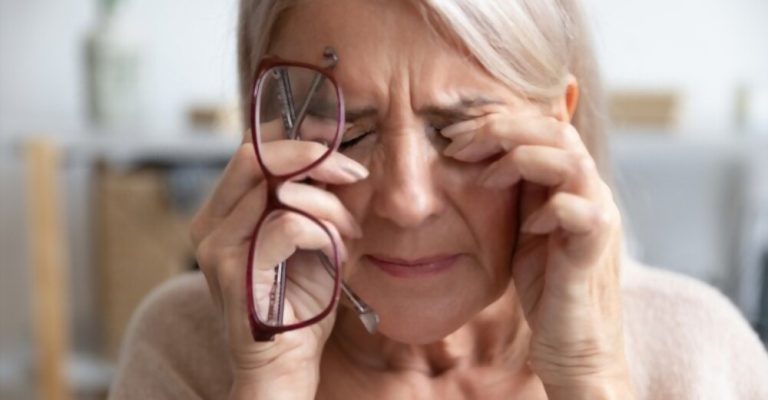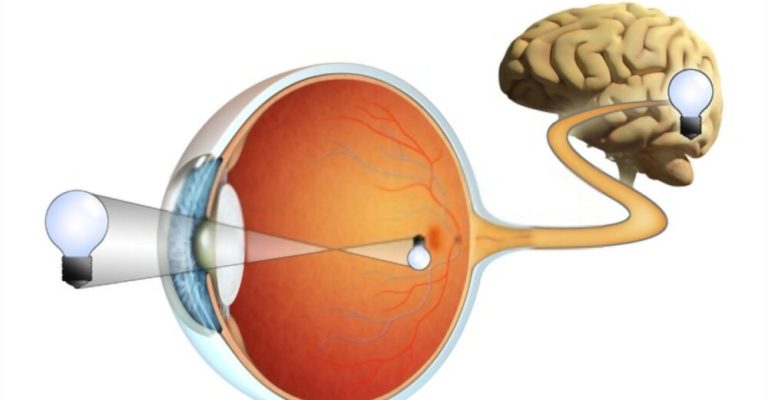
If you or a loved one has suffered from a stroke, you may be struggling to come to terms with the changes it brings – both physical and cognitive health. While there isn’t always an easy answer regarding recovery, evidence suggests hope for vision rehabilitation after a stroke. In this blog post, we’ll explore how recovery can happen and possible steps to consider if you would like to pursue restoring your sight after a stroke. So keep reading if improving your vision after a stroke seems achievable!
Many stroke patients report wea
60% of stroke survivors report having visual issues. It is crucial to remind these people that their eyes are whole. Instead, there’s damage to the neural pathways between the eyes and the rest of the brain, necessitating therapy.
Strokes that damage the brain’s visual cortex may alter how the body perceives visual information. A stroke in the major visual parts of the brain—the occipital lobes and parietal lobes—is the most frequent cause of this. However, it may also arise after damage to the temporal lobes, brain stem, or cerebellum.
The capacity of your brain to handle visual information might be impaired in two main ways after a stroke. The first issue is that a stroke may affect the brain’s ability to operate the eye muscles, leading to problems like double vision.
The second issue is that a stroke may affect the brain’s ability to interpret visual information. This indicates that you have full control of your eye muscles. However, your vision is blurred since your brain is unable to interpret what it sees.
One issue affects the ability to regulate muscles, while the other hinders the ability to interpret visual information. Consequently, recovering your vision after a stroke calls for neurological and visual processing skill development. The process of rehabilitating one’s eyesight makes this a reality.
First, let’s go through the many visual issues that might arise after a stroke, and then we’ll get into the treatments.
riness and sleepiness during the early stages of stroke recovery. While the brain generally consumes 20% of total body energy, that number rises in the weeks and months after a stroke. This is because the brain takes additional energy to fix the damage, leaving less energy available for normal processes like remaining attentive.
Getting enough sleep is critical for general health and well-being, particularly for stroke survivors. Adequate and restful sleep may help the body heal and renew and ease stroke symptoms such as excessive drowsiness. Some of the advantages of getting enough sleep after a stroke are as follows:
Improved cognitive function: Adequate sleep is necessary for the brain to operate correctly and may enhance cognitive function, memory, and learning.
Reduced risk of depression: Sleep difficulties are strongly connected to depression and anxiety, and getting enough sleep may help you avoid acquiring these mental health illnesses.
Reduced risk of stroke recurrence: Sleep deprivation has been associated with an increased risk of stroke recurrence. A good night’s sleep may assist in lessening this risk.
Improved cardiovascular health: Sleep is essential for maintaining cardiovascular health, and getting enough sleep may help reduce the risk of hypertension, diabetes, and obesity.

Stroke may have varying degrees of severity and impact on the brain. Vision impairment is more common in stroke victims whose occipital lobes or brainstems were affected.
The brainstem coordinates your eyes, maintains your equilibrium and steadiness, and makes sense of the physical environment. Hence, it can be involved in vision loss following a stroke.
Visual processing happens in the occipital lobe of your brain, located at the back of your head. The occipital lobe is responsible for processing visual data from the eyes. The occipital lobe, situated in the brain’s rear, is the primary visual processing area. However, the other lobes may also pick up visual cues.
Due to the unique nature of each stroke, rehabilitation after each event also varies. In addition, stroke may cause a wide variety of visual issues, each unique to the brain’s specific region that was damaged.
Examples of typical visual impairments after a stroke include the following:
Disorientation in one’s mind is mirrored in the body when one suffers from an eye movement issue. As a defense mechanism, the brain will often inhibit the damaged eye in situations of strabismus or diplopia. Without treatment, the damaged eye’s eyesight will continue to degrade. The likelihood of success increases with active rehabilitation.
One suffers from hemianopia when one only has access to half of a person’s visual field. The term “field cut” may be used interchangeably with this term. Those with right hemianopia cannot see what is to the right of the affected eye. In contrast, those with left hemianopia are unable to see what is to the left.
Having trouble seeing in the center of your visual field is known as central vision loss. This results in a loss of central vision yet preserve peripheral vision. Thus the person may still make out objects at the periphery of their field of view.
Another kind of visual impairment does not interfere with one’s ability to interpret visual information. Instead, it interferes with their ability to pay attention, making it so they could miss out on details of their surroundings on the side that’s been impacted. The term “visual neglect” describes this problem.
Neglect of the right side of the body is less prevalent than the neglect of the left. However, both conditions include a lack of awareness of one’s immediate surroundings.
When a person has quadrantanopia, they can’t see anything in the upper left corner of their visual field. As a result, the top or bottom half of your field of vision may be obscured.
Suppose you are experiencing visual problems after a stroke. In that case, your primary care physician or another healthcare provider may recommend seeing a specialist. Maybe you’re having problems with your eyes, brain, or both.
The diagnosis and treatment plan you get from your doctor will be tailored to your specific condition.
Your doctor will want to know your medical history in detail and will do a physical examination before making a diagnosis. Some diagnostic procedures, such as those used to evaluate your:

After diagnosis, the physician will formulate a treatment strategy tailored to your needs. First, let’s see what treatment options are present.
Suppose you suffer from nerve palsy or another ailment that causes double vision. Your medical professional might advise that you use a prism in your eyewear. A prism may prevent a person from seeing a duplicate picture by refracting light into a single beam. You may install them on your current pair of glasses or have a new prescription cut to fit them.
Those with double vision may also benefit from using eye patches. In addition, writing, watching Netflix, and other activities that require close attention to visual detail can benefit significantly from their use.
Depending on your specific visual impairment, you may benefit from specific workouts that aim to restore or rehabilitate your eyesight. In addition, to help individuals adapt to changes or overcome visual problems, customized exercises are designed to target specific areas of weakness.
For instance, scanning is a very successful therapy for those who have suffered visual field loss as a result of a stroke. To improve your peripheral vision and ability to notice and avoid potential hazards, you should practice “scanning,” a series of eye exercises.
Coordination, agility, and depth perception may all be helped by other clinicians, including physical and occupational therapists. Taking part in different pursuits can assist you in coping with the adjustments in your eyesight and the way they affect your daily life.
For further support in managing the tension, despair, and worry that these visual changes might bring on, your healthcare professional might suggest studying relaxation methods like deep breathing.
Generally speaking, some survivors see minor improvements in their vision within three months after a stroke. Furthermore, immediately after a stroke, spontaneous recovery is likely to occur. This means that some secondary effects, like vision problems, may improve on their own.
However, spontaneous recovery should not be relied upon for improvement. Instead, you can maximize your chances of regaining your sight after a stroke by actively participating in vision rehabilitation on a consistent basis.
A recent study found that hemianopia improved when survivors participated in visual training over several months. Any patient – regardless of age, blind field size, or how long ago they had a stroke – could have meaningful improvements in sight in about three months if they train twice daily, for 30 minutes each time.
After a stroke, it is common to have trouble seeing. Even if your eyesight improves in the weeks and months after a stroke, you may still be dealing with long-term complications. A professional can assist you in finding strategies to adapt, such as changing your routine, if you have modifications to your eyesight.